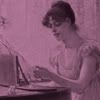Post by The Author on Jun 8, 2011 22:50:25 GMT -5
In every Jane Austen novel, there appeared certain types of characters. These included:
The heroine (naturally): The heroines were all different in each novel. Pride and Prejudice's Elizabeth Bennett and Mansfield Park's Fanny Price couldn't have been more different. Elizabeth was fiesty and opinionated and outspoken, while Fanny was quiet, meek, fearful, yet she held firm to her own principles. If you wish to play the heroine, you have a great deal of flexibility.
The hero: Just as the heroines were all different, so were the heroes. Mr. Darcy was proud, yet humbled by Elizabeth's reproofs. Northanger Abbey's Henry Tilney, however, was warm and playful, and strong enough to stand up to his father to win Catherine Morland's hand. The hero must be of fine, strong character, and of course be amiable in nature and warm of affection.
The rogue: For every Mr. Darcy, there must be a Mr. Wickham... the handsome, sweet-talking rogue who tries to sway the lady away from her hero. These men are all the same: you want to believe in them, as they speak so prettily and seem genuine in their affections. Some, like Henry Crawford, really do love the heroine... but they simply cannot mend their wicked ways.
The bad girl: Girls like Lydia Bennett, Isabella Thorpe, and Mary Crawford also abound in Austen's novels. These are the young ladies who are easily led astray and whose morals are not as strong as one would wish. Lydia ran off to elope with Wickham, Isabella allowed Captain Tilney to flirt with her, ruining her engagement with Catherine's brother, and Mary Crawford loved Edmund Betram, but hoped to lead him away from the Church. These girls usually end up unhappy in the end.
Consider these archetypes when making your characters. We don't just need the heroes and heroines; we also need the villains.
The heroine (naturally): The heroines were all different in each novel. Pride and Prejudice's Elizabeth Bennett and Mansfield Park's Fanny Price couldn't have been more different. Elizabeth was fiesty and opinionated and outspoken, while Fanny was quiet, meek, fearful, yet she held firm to her own principles. If you wish to play the heroine, you have a great deal of flexibility.
The hero: Just as the heroines were all different, so were the heroes. Mr. Darcy was proud, yet humbled by Elizabeth's reproofs. Northanger Abbey's Henry Tilney, however, was warm and playful, and strong enough to stand up to his father to win Catherine Morland's hand. The hero must be of fine, strong character, and of course be amiable in nature and warm of affection.
The rogue: For every Mr. Darcy, there must be a Mr. Wickham... the handsome, sweet-talking rogue who tries to sway the lady away from her hero. These men are all the same: you want to believe in them, as they speak so prettily and seem genuine in their affections. Some, like Henry Crawford, really do love the heroine... but they simply cannot mend their wicked ways.
The bad girl: Girls like Lydia Bennett, Isabella Thorpe, and Mary Crawford also abound in Austen's novels. These are the young ladies who are easily led astray and whose morals are not as strong as one would wish. Lydia ran off to elope with Wickham, Isabella allowed Captain Tilney to flirt with her, ruining her engagement with Catherine's brother, and Mary Crawford loved Edmund Betram, but hoped to lead him away from the Church. These girls usually end up unhappy in the end.
Consider these archetypes when making your characters. We don't just need the heroes and heroines; we also need the villains.

